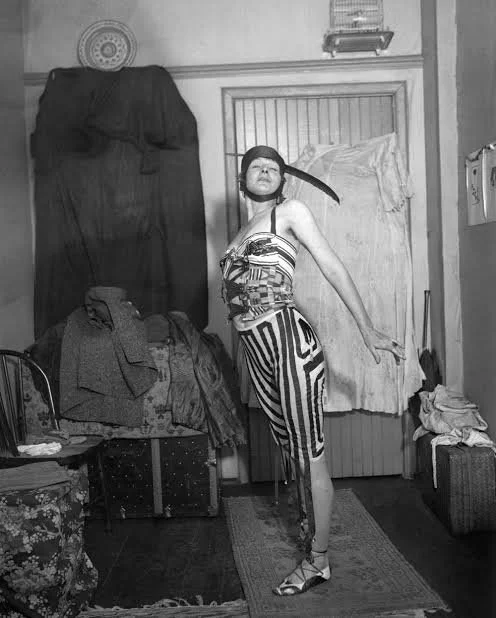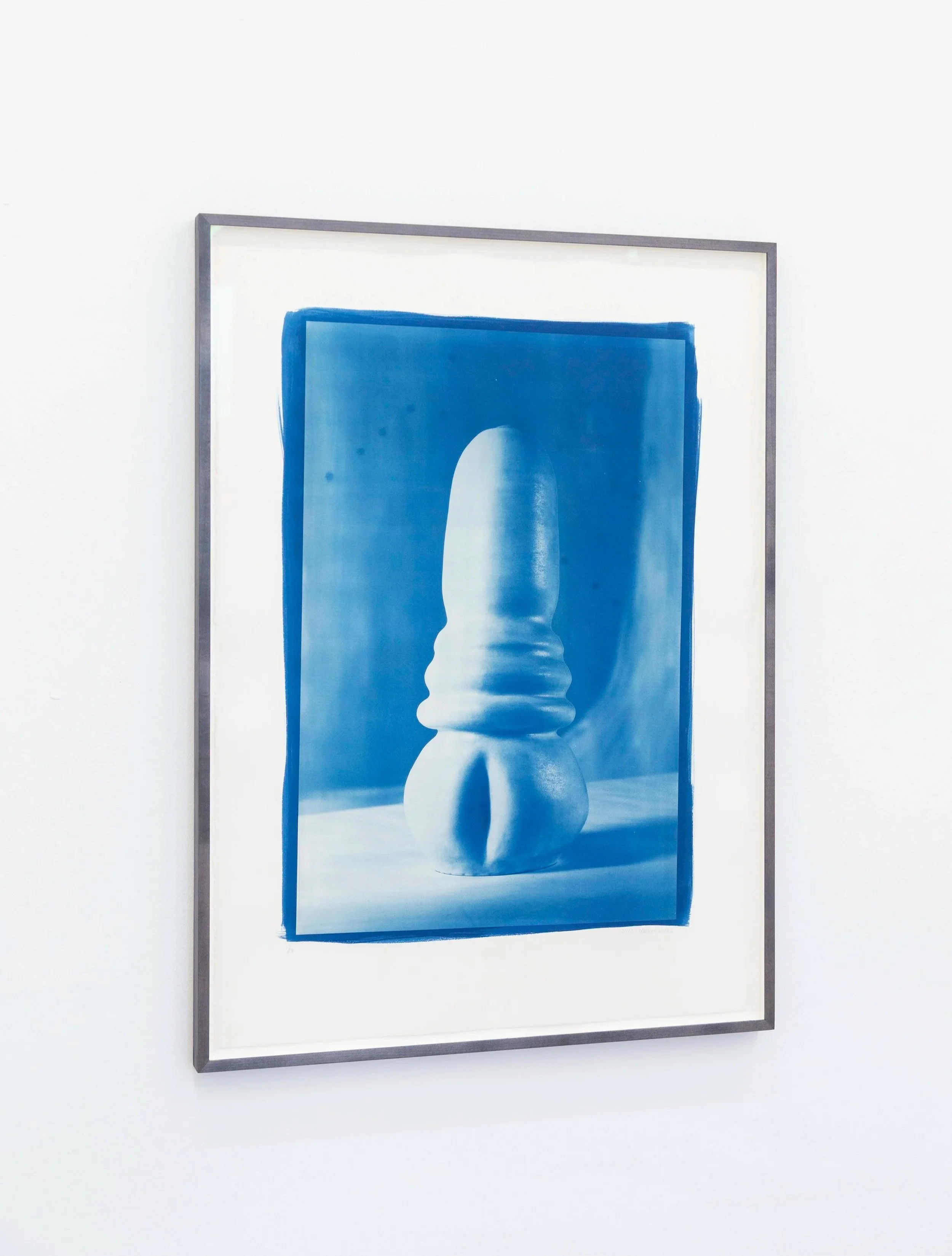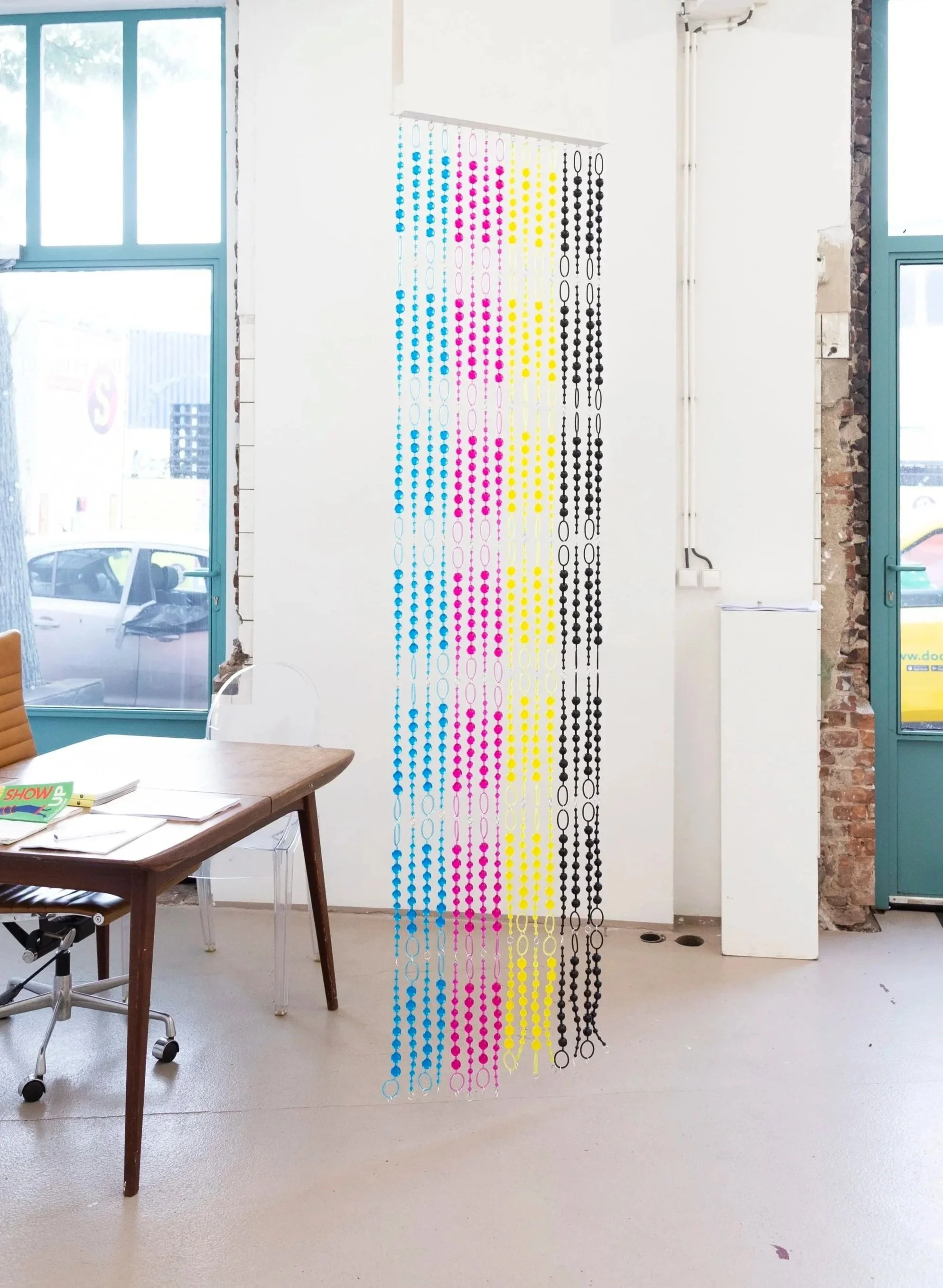KISSAMBUSHED
With: Bastienne Kramer, Meis Vranken, Jan Hoek, Guda Koster, Mariken Wessels, Joseph Hughes and Carmen Schabracq.
Opening: October 3rd 17:00 on show until Nov 15
A group exhibition co-curated by artist Carmen Schabracq.
She made outrageous costumes, paraded through the streets with a self-made phallus, and wrote poems about the female orgasm long before anyone dared. Elsa von Freytag-Loringhoven was unapologetically ahead of her time. She collected scrap metal, tomato cans, and everyday junk, turning them into art before “readymade” was worth naming. Her work and life were infused with provocation. She didn’t fit into a box, and she didn’t want to.
It’s this spirit that is the starting point of ‘KISSAMBUSHED’, on show from October 3 until November 15. The exhibition brings together artists who, like her, challenge the ordinary, using humor, the body, and with a refusal to please. Their works are playful and layered: they draw you in with wit and color, yet beneath the surface lies more than meets the eye.
Curated by Carmen Schabracq and Gallery van Fanny Freytag, the show both honors her legacy and brings her fearless spirit into today’s world.











Mariken Wessels, Untitled, 2025, cyanotype, with frame, 96 cm x 70,6 cm.
Mariken Wessels (1963, the Netherlands) creates artist’s books, photo series, film works, sculptures, and installations. Her multilayered projects interweave appropriated imagery and self-produced images to reimagine the boundaries of the public and private spheres and the role of bodily expression. Prior to her visual practice, Wessels studied acting at the Amsterdam Theater School and, after a decade-long acting career, visual arts at the Gerrit Rietveld Academy. Wessels held solo exhibitions at the Fotomuseum Antwerp and the Fotomuseum Den Haag. Her art works and artist’s books have been acquired by numerous collections around the world, such as Het Kröller-Müller Museum (Otterloo), Het Stedelijk Museum (Amsterdam), Fotomuseum Antwerpen, Kunstmuseum Den Haag, International Center of Photography (New York), Museum of Modern Art library (New York), Bayerische Staatsbibliothek (Munich), and Ampersand Foundation (Johannesburg).
Jan Hoek, Jantje666huntedportraithouse , 2025, videowork time: 9:11, edition: 3 + 2AP.
Jan Hoek (1984, The Netherlands) is an artist and writer. In his work, he is always drawn to the beauty of outsiders worldwide and is keen to collaborate intensively with people who are normally overlooked, creating new images together. He has photographed movie stars such as Nairobi-based motor taxi riders and an Amsterdam-based former heroin addict who always dreamed of being a supermodel. He has also created psychedelic zines about Pattaya, the sex tourism capital of the world, and made a series about the Maasai who do not identify with the stereotypical jumping image.
In Hoek’s universe, so-called ‘normal’ people are the strangers, while outsiders are the funky rulers of this planet. Hoek’s work has been shown at venues such as Foam (Amsterdam), Unseen Festival (Amsterdam), Photoville (New York), FOMU (Antwerp), and Lagos Photo (Lagos).
Bastienne Kramer, Abused Barbie, 1999, glazed ceramics, 6.8 cm x 7 x 26 cm, edition: unlimited
Bastienne Kramer (1961, Netherlands) creates sculptures and installations that transform everyday objects into manipulated environments. Drawing on clichés from popular culture, her work reveals the conservative and often sexist undertones hidden within both fast consumer goods and traditional craft. By reframing these objects, Kramer exposes how culture preserves regressive ideologies under the guise of progress or timelessness. Kramer studied ceramics at the Akademie voor Kunst en Vormgeving St. Joost Breda. She followed a residency at the Rijksakademie voor Beeldende Kunsten Amsterdam, from 1987-1989.
Her works have been acquired by numerous collections such as Rijksmuseum van Oudheden (Leiden), Ministerie van Financiën (The Hague), Ministerie van Buitenlandse Zaken (The Hague). Kramer was head of the Ceramics Department at the Gerrit Rietveld Academie in Amsterdam between 2006 and 2014.
Carmen Schabracq, Mutter, 2025, Crochet wool textile dried calabash on iron stander, 170 cm x 50 cm x 30 cm
Carmen Schabracq co-curated the exhibition together with Gallery van Fanny Freytag (1988, Netherlands). Schabracq works across painting, sculpture, ceramics, textiles, costume and performance. Masks are central to her practice, used to explore shifting identities and collective memory. Drawing from mythology, folklore and feminist perspectives, her colourful works weave together playfulness, tactility, and narratives of motherhood and intergenerational ties.
In 2012 she obtained her BA in fine arts from the Gerrit Rietveld Academy, after a year of painting studies at the Academia di Belle Arti in Rome. In 2015 she obtained her MA in theater costume design at the Royal Academy of Fine Arts Antwerp. She has completed artist residencies in Mexico City, Bulgaria, Italy, and the Netherlands and in 2024, she designed the costumes and masks for The Gospel According to the Other Mary at the Volksoper in Vienna. Her work is part of collections including het Ministerie van Binnenlandse Zaken, Vrije Universiteit Amsterdam and the AkzoNobel Art Foundation. She has shown in institutions such as the Amsterdam Museum, Stedelijk Museum Breda, Museum Villa Mondriaan and the Textile Museum in Łódź.
Joseph Hughes, String of Pearls, 2025, 112 anal beads, key rings, eye screws, 210 cm × 80 cm × 3 cm
Joseph Hughes (UK, 1986) hijacks everyday objects—already heavy with cultural charge—and metamorphoses them into uneasy new arrangements. Scale slips, language fractures, and familiar things start misbehaving. It’s part design, part critique, part sly wink: he weaponises perception through bricolage. His pieces hover in the grey zone between the universal and the personal, between sign and signifier. They don’t hand you answers; they’re visual bait, inviting laymen and critics alike to decode, doubt, and reassign value. Uncertainty is where ordinary stuff starts to whistle a different tune.
Guda Koster, Streepje, 2016, Cardboard, textile, pvc, 25 cm x 8 cm x 8 cm
Guda Koster (1957) moves between fashion, sculpture, photography and performance. Her textile-based works often resemble clothing, sometimes worn and staged in photographs where she is her own model. Since 2016 she has collaborated with Frans van Tartwijk on public performances, expanding her practice into sculptural figures that enter everyday space.
In 2017 and 2020, she designed costumes for two productions by the dance company AURA from Kaunas, Lithuania, and in 2024 she worked on a commission for Centre Pompidou. She exhibits both in the Netherlands and abroad, and her work is included in several collections such as the LAM museum (Lisse), Akzo Nobel Art Foundation , KPMG art collection.
Meis Vranken, Tuinkabouter met Bloederige Puntmuts, 2023, Glazed ceramic, steel wire, bucket, grass, 80 cm x 30 cm x 30 cm
Meis Vranken (1997, Netherlands) is a multidisciplinary artist working with painting, video, sculpture, performance and music.
After graduating from the Gerrit Rietveld Academie in 2021, she has exhibited paintings, video installations, and sculptures, and has regularly performed with her experimental punk band Yodel Queen. Recently, she completed her first mid-length film, De Ochtend (The Morning), an intimate documentary about the start of the day. She is currently a resident at venue Cinetol, where she is working on Flat News, a performance about her own home.
Vranken’s work focuses on everyday subjects that everyone recognizes, yet often barely receive any attention. Topics such as The Dishes, The Trash Can, The House, and The Garden Gnome. With her distinctive philosophical-poetic approach, she uncovers the underlying meaning of these seemingly trivial subjects.










